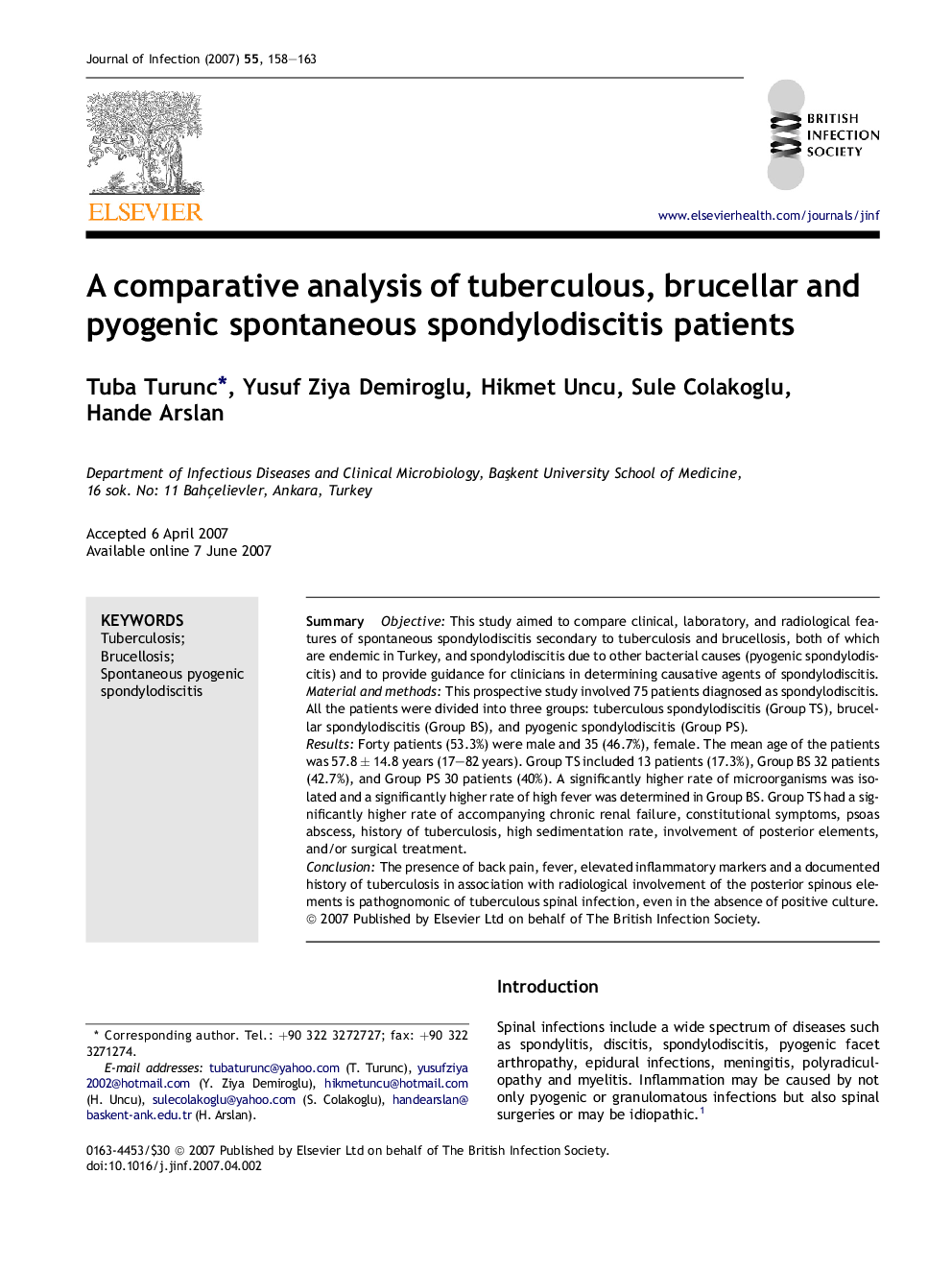| کد مقاله | کد نشریه | سال انتشار | مقاله انگلیسی | نسخه تمام متن |
|---|---|---|---|---|
| 3376392 | 1219730 | 2007 | 6 صفحه PDF | دانلود رایگان |

SummaryObjectiveThis study aimed to compare clinical, laboratory, and radiological features of spontaneous spondylodiscitis secondary to tuberculosis and brucellosis, both of which are endemic in Turkey, and spondylodiscitis due to other bacterial causes (pyogenic spondylodiscitis) and to provide guidance for clinicians in determining causative agents of spondylodiscitis.Material and methodsThis prospective study involved 75 patients diagnosed as spondylodiscitis. All the patients were divided into three groups: tuberculous spondylodiscitis (Group TS), brucellar spondylodiscitis (Group BS), and pyogenic spondylodiscitis (Group PS).ResultsForty patients (53.3%) were male and 35 (46.7%), female. The mean age of the patients was 57.8 ± 14.8 years (17–82 years). Group TS included 13 patients (17.3%), Group BS 32 patients (42.7%), and Group PS 30 patients (40%). A significantly higher rate of microorganisms was isolated and a significantly higher rate of high fever was determined in Group BS. Group TS had a significantly higher rate of accompanying chronic renal failure, constitutional symptoms, psoas abscess, history of tuberculosis, high sedimentation rate, involvement of posterior elements, and/or surgical treatment.ConclusionThe presence of back pain, fever, elevated inflammatory markers and a documented history of tuberculosis in association with radiological involvement of the posterior spinous elements is pathognomonic of tuberculous spinal infection, even in the absence of positive culture.
Journal: Journal of Infection - Volume 55, Issue 2, August 2007, Pages 158–163